- youtube
- bluesky
- Home
- About
- Costume Journal
- Membership
- Conference & Events
- Grants & Awards
- News & Social
The writer Thomas Hardy’s Memorial Collection is held by Dorset Museum. This includes not only a collection of Hardy’s writing and papers but also textiles and other personal objects. Among these are a fragment of his mother Jemima’s wedding dress and her shawl. Since their acquisition, these objects have been in store and not shown on public display.
As part of the Hardy’s Wessex The landsapes that inspired a writer exhibition this year, we wanted to tell the story of the woman who had such an impact on Hardy’s life and approach to life. Jemima started her career at the age of 13, in service to a local household. After 13 years she had reached the position of cook and dreamt of working in a club in London. Her ambitions were scattered by pregnancy and marriage, leaving her to redirect them into her children. Jemima reputedly advised her daughters not to marry, so as to preserve their independence in a time when marriage meant handing over control of money and property to a husband. She also passed on a deep-seated belief that fate would always throw up obstacles in your way, a theme often revisited in Hardy’s later work. Her ambitions for her children are also seen in her determination to teach them to read before they started school, as well as negotiating a good education for them where she could, including paying for music lessons with honey and haggling for Hardy’s apprenticeship payment with a local architect. The evidence of scraps of fabric that were preserved from the Hardy family (his mother’s cloak from when she was a servant, his father’s waistcoat, his grandmother’s dress) as well as various extant garments give the impression of a family who valued the memories associated with material, and particularly textile, culture.
The first of the two textiles which we have included is the silk taffeta fragment of her wedding dress from her marriage to Thomas Hardy Senior in Dec 1839. The pattern is a cream ground with brown and blue parallel stripes that, when set diagonally against each other along the bodice’s centre front, would have created a stylish chevron pattern. This pattern is also reminiscent of the 1840s fashion for diagonal gathers from the shoulders to the centre front, a style that is seen in the other extant dress thought to have belonged to Jemima.
The first of the two textiles which we have included is the silk taffeta fragment of her wedding dress from her marriage to Thomas Hardy Senior in Dec 1839. The pattern is a cream ground with brown and blue parallel stripes that, when set diagonally against each other along the bodice’s centre front, would have created a stylish chevron pattern. This pattern is also reminiscent of the 1840s fashion for diagonal gathers from the shoulders to the centre front, a style that is seen in the other extant dress thought to have belonged to Jemima.
The second is a striped paisley shawl in woven silks and cottons dyed red, black, browns, green, yellow, blue, [and] pink with warp fringing at ends. Although we do not know when this was acquired, we have speculated that it may have been given as a gift from her employers. However, the label sewn onto it reads: ‘This shawl was given to Joan Lock by Miss Kate Hardy, sister of Thomas Hardy OM. It belonged to their mother’.
Although the shawl had not suffered much deterioration, it was recommended by Morwena Stephens at the Royal Albert Memorial Museum that it was cleaned, the fringe humidified and realigned, and loose weft floats and small holes darned in black wool.
The fragment of wedding dress was deemed not to have dramatically deteriorated beyond some staining, but had become creased from where the Hardy family had stored it in an envelope. The fragment was given a light surface clean, first with a Museum Vac with an upholstery nozzle, then with a Smoke Sponge cut into a brush and finally with polyurethane cosmetic sponge to reduce ingrained soiling. The fragment was humidified and flattened with glass weights, to reduce creasing and distortion. Fraying corners were secured with long and short stitching in very fine polyester thread drawn from Stabiltex (leno weave) fabric. This work was undertaken by Morwena.
The work on the fragment not only reduced the creasing but also enabled us to make out the part of the wedding dress from which it had been taken. The nondescript staining previously identified was discovered to be perspiration stains below a truncated armscye. The flattening also revealed stitching holes from a bodice dart and the stitching from a central fastening and part of the neck hole. In summary, the fragment was the back proper right piece of the bodice, roughly squared by removing part of the shoulder and the waist. This emphasised the potential chevron pattern down the centre-back. In this way, the conservation work has made this fragment legible as the garment it originally formed rather than as merely a scrap of fabric.
In addition to the conservation work, a mount was created by Colin John Lindley to support the shawl. We wanted the form of Jemima to be ‘present’ in the shawl, rather than to present it as a depersonalised artwork hung flat. We trialled various draping methods, before settling on a diagonal fold around the shoulders. Colin’s mount was then covered by Morwena.
The shawl is currently on display in The Salisbury Museum as part of the exhibition telling the story of Jemima’s influence on children. It has been placed alongside a portrait believed to be of Thomas Hardy and his mother c.1840, and shows her wearing a similar shawl. This portrait is a very recent acquisition and also making its debut on public display.
The wedding dress fragment is in Poole Museum, reflecting on the impact that Hardy’s parents’ relationship had on his literary depictions of love, marriage and childbirth.
These objects were also shown to the costume and performance design students at Arts University Bournemouth, inspiring responses to late-nineteenth-century costume, which are currently on display in the four galleries.
We are very grateful that the Costume Society’s Daphne Bullard grant has allowed us to conserve and display these intriguing, personal objects as part of Hardy’s Wessex: the landscapes that inspired a writer, as well as consolidating them for future research and engagement.
Image gallery
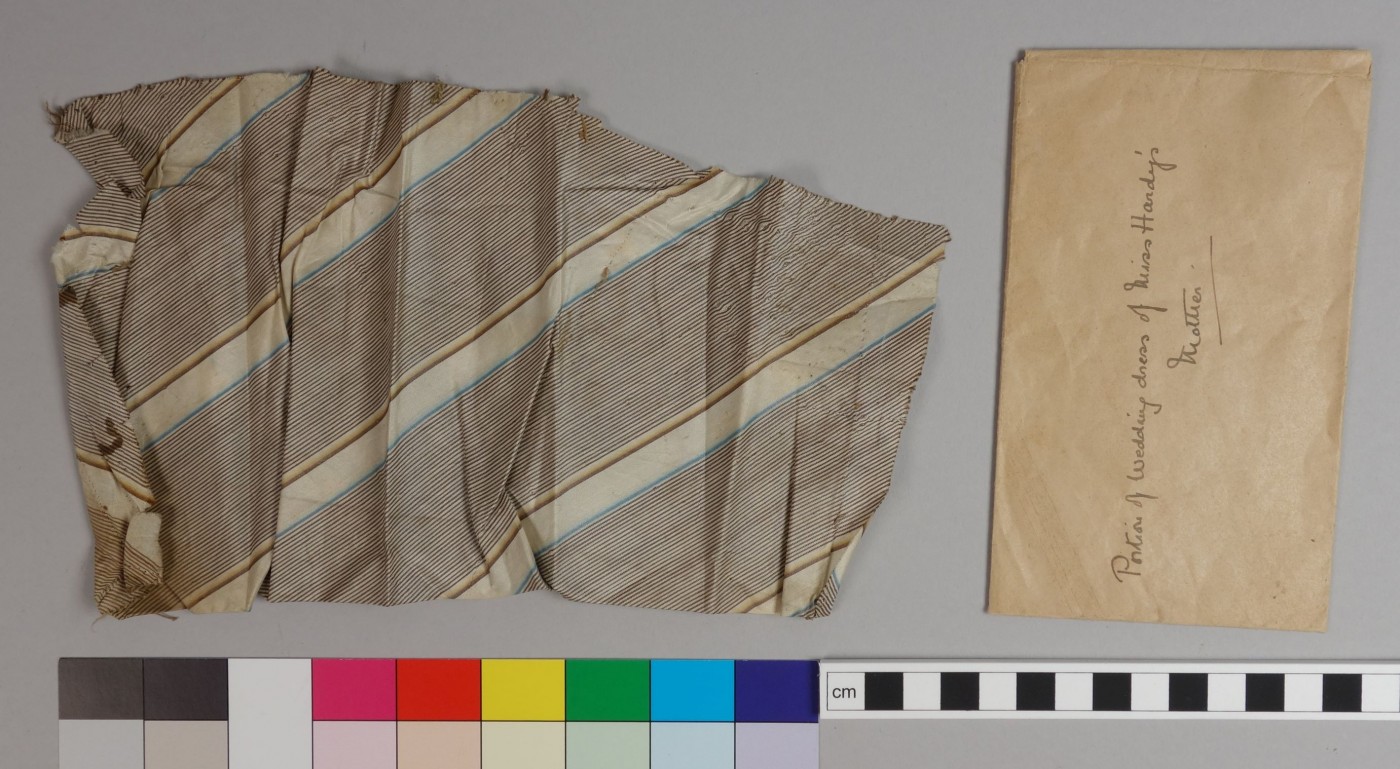
Dress fragment before conservation
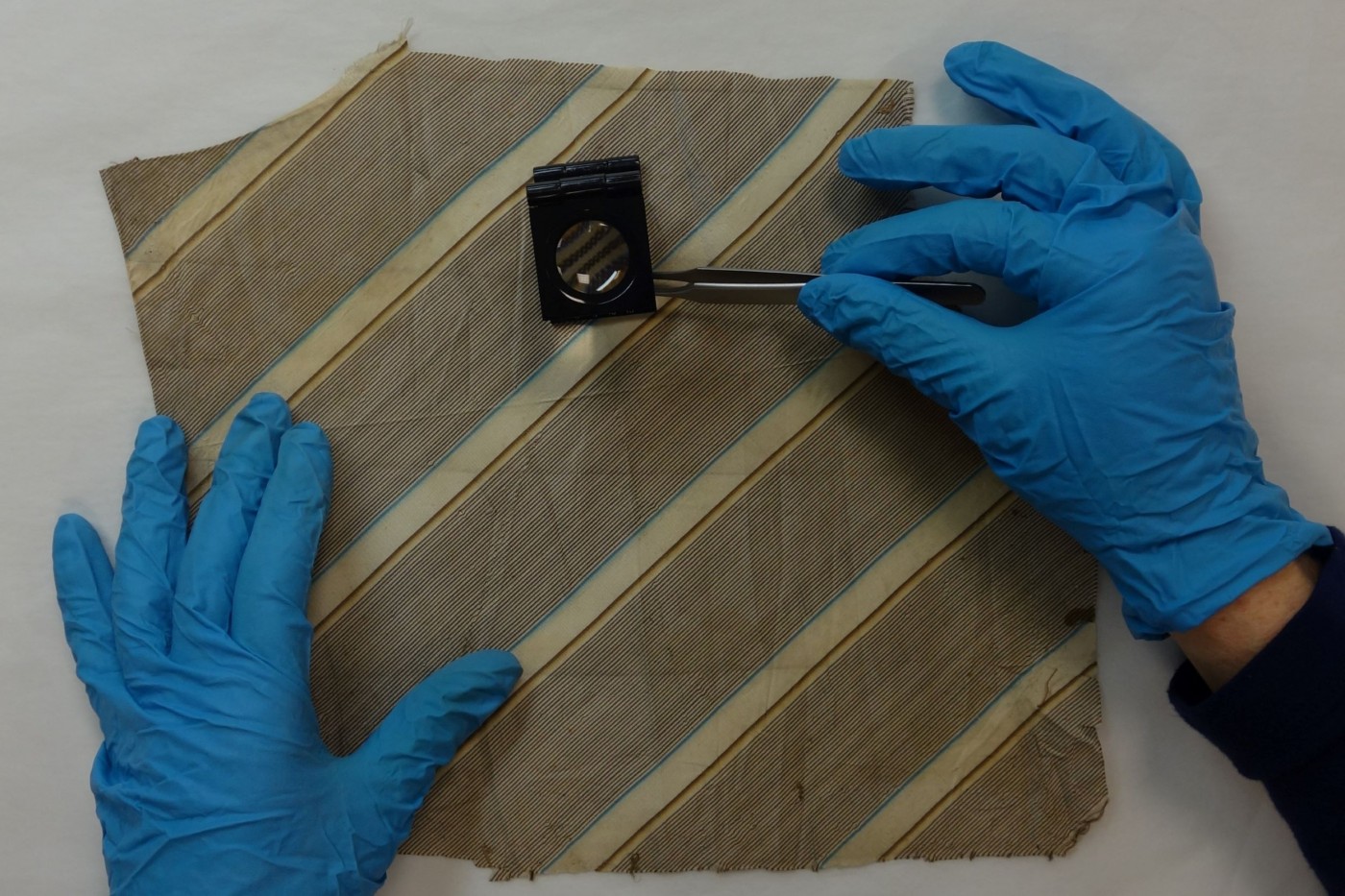
Examining original stitch holes in dress fragment
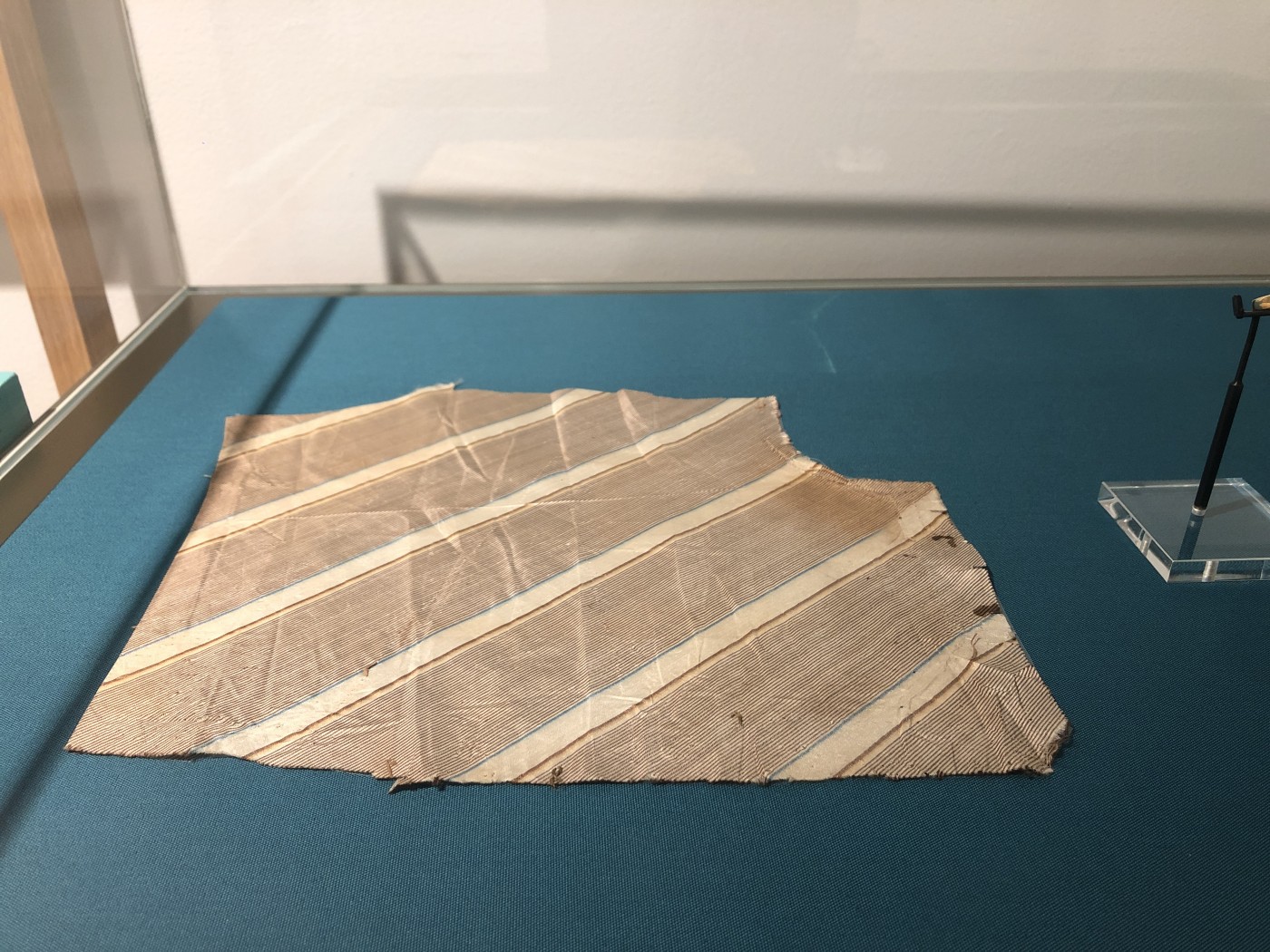
Dress fragment on display in Poole Museum
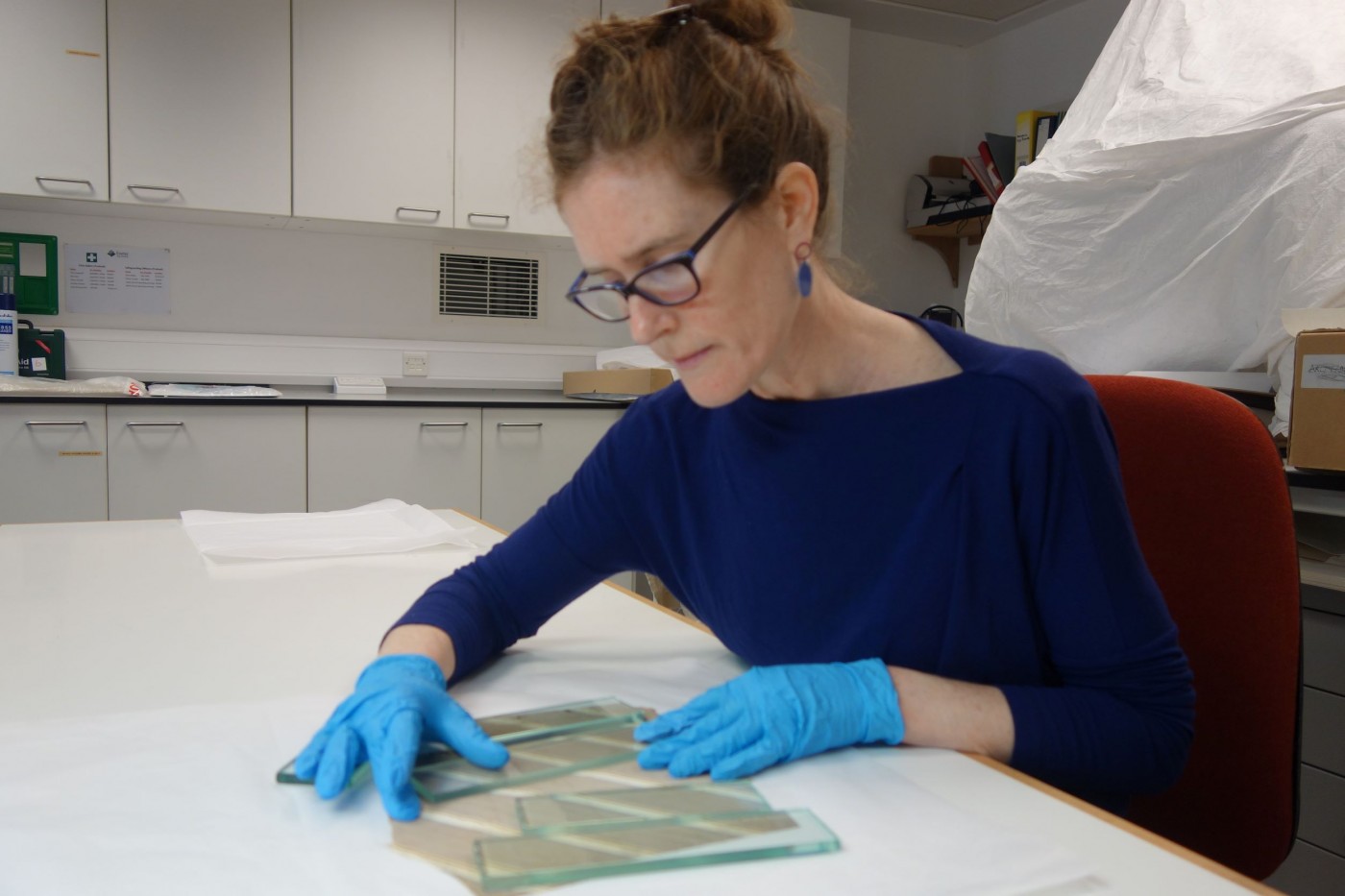
Removing creases from dress fragments with glass blocks
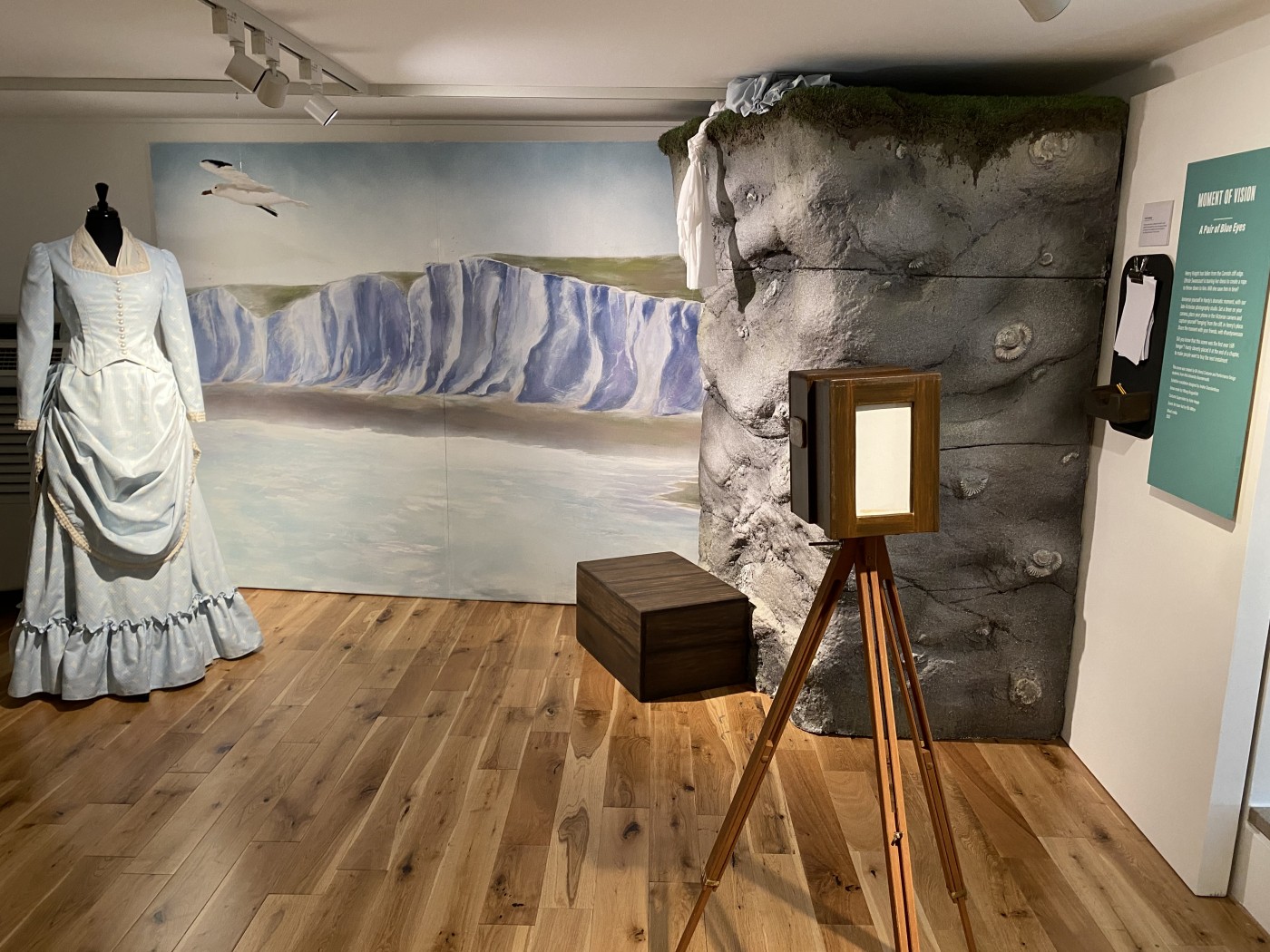
Final Installation for A Pair of Blue Eyes installation at Poole Museum